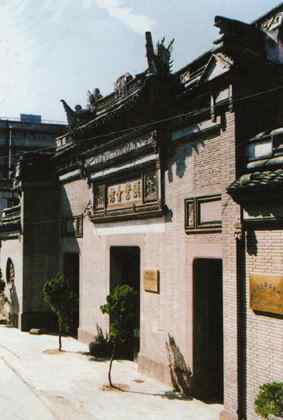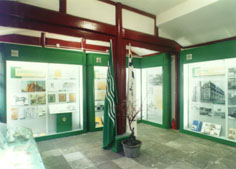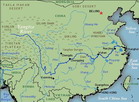2020 Yangtze River Cruise and Ferry Starting from 79 USD p.p.!
Wanxian Introdaction
About two hours below Shibaozhai
the boat reaches Wanxian, which is guarded by
two nine-storeyed pagodas for good fortune.
The city spreads out on both sides of the river
and is known as the 'Gateway to East Sichuan'.
lt is situated high above the river and the
foundations of the  buildings
are many metres high. Porters vie with each
other to carry passengers' luggage up the steep
stairways to the city. The winding streets vary
in level from 29 to 206 metres (95 to 675 feet),
so bicycles ate a rare sight. Wanxian has a
number of silk-weaving and spinning factories
supported by intense silkworm cultivation--operated
on a family basis--which continues year round
in Wanxian County. Other light industries include
tea, bamboo and cane goods, cotton clothing,
leather and Chinese medicines. Paper mills utilizing
wheat and rice straw from the countryside disgorge
milky waste into the Yangtze, adding to the
pollution.
buildings
are many metres high. Porters vie with each
other to carry passengers' luggage up the steep
stairways to the city. The winding streets vary
in level from 29 to 206 metres (95 to 675 feet),
so bicycles ate a rare sight. Wanxian has a
number of silk-weaving and spinning factories
supported by intense silkworm cultivation--operated
on a family basis--which continues year round
in Wanxian County. Other light industries include
tea, bamboo and cane goods, cotton clothing,
leather and Chinese medicines. Paper mills utilizing
wheat and rice straw from the countryside disgorge
milky waste into the Yangtze, adding to the
pollution.
Of the three major regions affected
by the proposed Three Gorges Dam, Yichang, Wanxian
and Chongqing, Wanxian will lose the most. Two--thirds
of the total of 1. 2 million people to be relocated
live in the Wanxian prefecture and the reservoir
will inundate two-thirds of the city. Over 900
factories are located below the new waterline,
and many have already been replaced on higher
ground.
History OF Wanxian
The city received its present name
during the Ming dynasty (1368--l644), and became
a foreign treaty port in l902. In l926 two British gunboats
bombarded the city, causing massive fires, when
the local warlord took to commandeering foreign
vessels for the transport of his troops. Following
this incident, a boycott on the loading and
unloading of British vessels was enforced for
several years. This became known as the Wanxian
Incident.
treaty port in l902. In l926 two British gunboats
bombarded the city, causing massive fires, when
the local warlord took to commandeering foreign
vessels for the transport of his troops. Following
this incident, a boycott on the loading and
unloading of British vessels was enforced for
several years. This became known as the Wanxian
Incident.
As the halfway city between Yichang
and Chongqing, Wanxian was a main port for East
Sichuan merchandise (including large quantities
of hung oil, used in treating wooden junks).
Early travellers commented on the huge number
of junks anchored at Wanxian. Junks also used
to be built here from cypress wood found in
the nearby hills.
What TO SEE IN WANXIAN
The downriver boats from Chongqing
usually reach Wanxian in the early evening,
and depart in the small hours of the following
morning although timings will change as the
river rises.
This enables the passage of the
Three Gorges to be made in daylight. Upstream
boats also make a long stop. Passengers rush
off the boats, hurrying up the hundreds of steps
to the town where every night of the year the
famous Wanxian rattan and cane market is held
on Shengli Lu. Buyers and sellers mingle in
a frenzy of bargaining for handmade summer bed
mats, fans, hats, straw shoes, furniture and
basketry. Small, round, red- trimmed baskets
with lids are the most popular item and are
well known throughout China. Roadside stalls
trade in spicy noodles and cooling, opaque soyabean
jelly and fresh fruit. ln the mornings, just
a little further west of the night market area,
one of the city's ten free markets sells local
produce and seasonal delicacies such as mountain
mushrooms or live eels. Second Street (Er Malu)
is the main shopping thoroughfare.
There was a community of foreign
missionaries in this region (formerly Sichuan
Province) before l949, and two churches--Catholic
and Protestant--continue to draw sizeable congregations
of country folk.
In l983 a small workshop was set
up, employing two teenage boys and a few part-
time workers to paint and varnish river stones
from the Three Gorges and from the Daning River's
Three Little Gorges. These make attractive mementoes
and can be bought at the Arts and Crafts Store,
1 Third Street (San Malu). Visitors may also
visit silk-weaving and cane--furniture factories.
. LU POND AND XISHANPAI PAVILION
This small pool, originally dug
by a locally revered Song-dynasty official,
Lu Youkai, was once a  very
large lotus pond surrounded by decorative pavilions.
Now it is not much more than a traffic roundabout.
Nearby stands an ancient two-storey, yellow-tiled
pavilion which houses a huge rock carved by
the calligrapher Huang Tingzhen. Around the
Xishanpai Pavilion once flowed a winding freshwater
channel. Local literati would spend their evenings
here, floating full wine cups along the channel.
When a wine cup stopped in front of one of them
his forfeit would be to compose a poem.
very
large lotus pond surrounded by decorative pavilions.
Now it is not much more than a traffic roundabout.
Nearby stands an ancient two-storey, yellow-tiled
pavilion which houses a huge rock carved by
the calligrapher Huang Tingzhen. Around the
Xishanpai Pavilion once flowed a winding freshwater
channel. Local literati would spend their evenings
here, floating full wine cups along the channel.
When a wine cup stopped in front of one of them
his forfeit would be to compose a poem.
. WESTERN HILL PARK
A clock tower, which dominates the
town's skyline from the river, was built in
this large park in l924. The upper part was
damaged by Japanese bombs in l939. There is
a memorial to a Russian volunteer pilot whose
plane crashed in the river in the same year.
During the summer, people relax in bamboo deck-chairs
under the leafy trees, sipping tea and listening
to Sichuan-style opera.
. STONE QIN BRIDGE
A natural bridge in the shape of
a Chinese zither crosses Chu River, which divides
the town. It is said that Lu Ban, the patron saint of carpenters,
spent a whole night building it.
said that Lu Ban, the patron saint of carpenters,
spent a whole night building it.
. TAIBAI ROCK
The poet Li Bai (70l--62) lived
here for a time, in the Ming dynasty a memorial
hall was built to commemorate him. Stone inscriptions
dating back to the Tang dynasty are still to
be seen.
. THE THREE GORGES MUSEUM, WANGZHONG
HIGHWAY
This small museum, on the Wanzhong
Highway, is a repository of some of the artifacts
collected in advance of the flooding of the
area by the new dam. Han tomb effigies and a
Ba period 'hanging coffin are featured. The
museum's exhibits are rudimentary, but the shop
is extensive--the usual tourist trap with no
local products.



